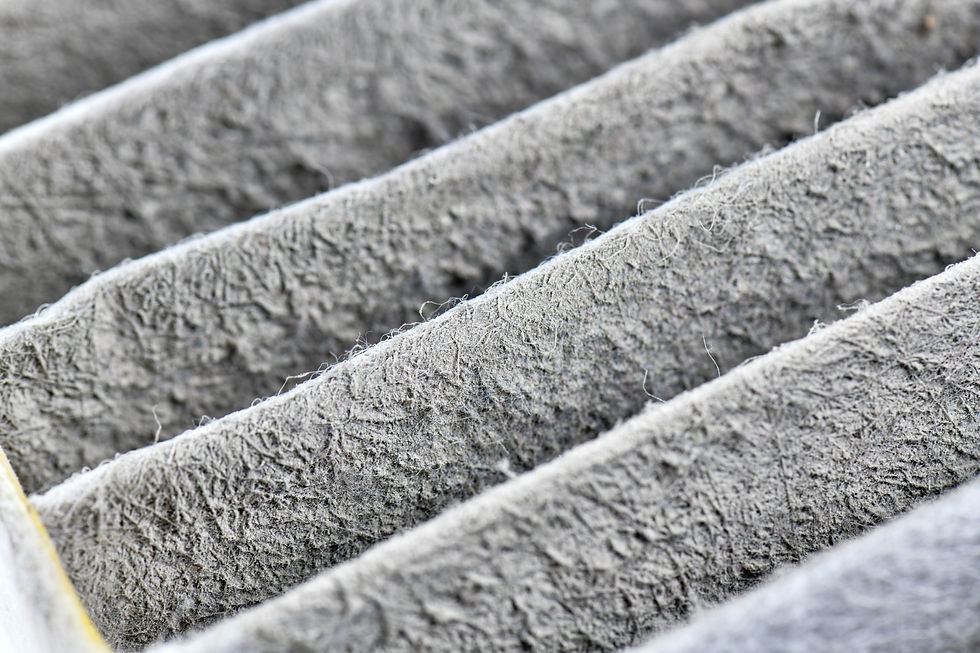Do Air Purifiers Remove Smells?
- Jennifer Crowley
- Jul 31, 2023
- 4 min read
Updated: Jul 9, 2024

Indoor air pollution is a serious concern for commercial and industrial facilities and homeowners. One of the most common complaints about indoor air quality is the presence of unpleasant odours. Whether it’s caused by smoking, cooking, or pets, pungent odours can be a real problem in any indoor space. Many people turn to air purifiers to solve this problem, but do air purifiers reduce odours?
In this blog post, we will explore how air purifiers can help with bad smells and why certain air purifiers are better than others. Specifically, we will discuss how air purifiers with activated carbon are better at absorbing unwanted odours, volatile organic compounds (VOCs), and organic compounds, creating that crisp, fresh air feel.
Whether you’re dealing with industrial chemicals, cigarette smoke, or cooking smells, we’ll help you understand how an air purifier might solve your odour problem. So, let’s dive in!
Common Causes of Indoor Odour
Indoor air can be more polluted than outdoor air, even in large industrial cities. A big reason your indoor space might have a strange smell is the lack of ventilation. When an indoor room isn’t adequately ventilated, contaminants like allergens, VOCs and odours become trapped, and a lack of airflow increases indoor pollution levels and encourages mould and bacteria growth.
Mould and Mildew
Proper identification is crucial when dealing with household fungi due to the different treatment methods required. These fungi emit volatile organic compounds (VOCs) that produce a musty smell during various stages of growth. Although the spores of these fungi can be toxic, their odour can serve as a helpful indication that there is an issue in your home.
Using various ventilation methods and ensuring adequate airflow indoors is an excellent way of preventing mould and mildew. However, if you come across mould or a musty smell in your home, you must act swiftly after discovering them to avoid any potential health hazards.
Smoke
Instead of covering up foul odours with stronger fragrances, it’s essential to address the root cause of the smell as much as possible. This can include eliminating the source of the odour and regularly cleaning the affected area. An effective air purifier can also play a crucial role in eliminating lingering and unpleasant smells in your home once the source has been removed and cleaning has been done.
Pets
Pets, through the secretion of tiny proteins, oils, and other substances and shedding dander, can create an unpleasant odour in your home. Additionally, dander can pose a significant threat to individuals who suffer from allergies.
Chemical Contaminants
Chemical contaminants can be found in various sources, one of the most common being Volatile Organic Compounds (VOCs). These organic chemicals containing carbon can evaporate into the air and cause odours. They are commonly found in office and home environments and can be emitted from a wide range of products found in these spaces.
HEPA Air Purifiers Remove Smells
HEPA filters are designed to capture large particles. However, they can only remove odours, chemicals, gases, or VOCs with additional technology. Therefore, they could be more efficient in eliminating odours.
HEPA Air Purifiers with Activated Carbon
With activated carbon filters, air purifiers can effectively absorb unwanted odours, volatile organic compounds (VOCs), and other organic compounds, leaving your space smelling fresh and clean. Activated carbon filters work by adsorbing VOCs onto their surface, where they are trapped and neutralized. When used together, HEPA air purifiers and activated carbon filters can effectively remove odours from the air.
Blade HEPA Air Purifier
The Blade HEPA Air Purifier has a comprehensive multi-stage filtration process to ensure a completely clean air environment in any deployed indoor setting. The four stages of air filtration are:

Stage 1
Large to medium particle pre-filter to initially remove dust, dirt, and debris.
Stage 2
Pulling pre-filtered air through a high-efficiency variable speed fan.
Stage 3
Industry-leading cubic HEPA removes 99.97% of all particles at 0.3 microns in size.
Stage 4
Pleated activated carbon filter for the absorption of odours, gasses and chemicals.
Why is the Blade HEPA Air Purifier the best choice?
The Premium air purifier is a perfect solution to enhance the air quality in any space, regardless of size. Equipped with one cubic foot of HEPA filter that has been certified and independently lab-tested, it can effectively remove 99.97% of airborne particles that are 0.3 microns and smaller. Additionally, it has an active carbon filter that captures odours, VOCs, and organic compounds, perfect for odour control.
Learn more about the Blade HEPA Air Purifier.
Additional tips to remove odour
The most immediate thing you can do to improve indoor odour and air quality is to open windows and doors so that fresh air can circulate. Once you shut them, make sure to run a high-quality air purifier to clean whatever contaminants remain in the air. In addition to an air purifier, ensure your HVAC filters and air ducts are clean and continuously running to control indoor humidity levels and prevent a build-up of contaminants.





















